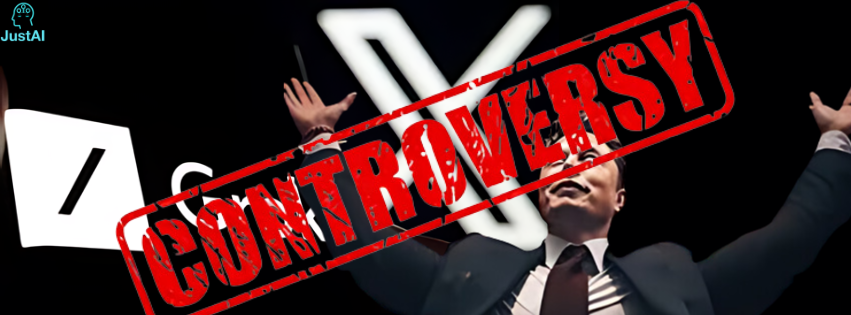Key Highlights:
- Musk’s Grok AI Tool Makes Misleading Images: Elon Musk’s AI chatbot, Grok, recently unveiled a feature for generating images on Twitter, now X, through the release of Grok-2 and Grok-2 mini on 13th August, 2024, which immediately started producing and sharing live, realistic but fake images of political figures like Donald Trump and Kamala Harris and this has fanned fears of potential misinformation gone wild, especially with the U.S. Polls coming up soon.
- Absence of guardrails in Grok AI: Unlike any other AI image generation, this tool seems to be with very few taboo or control mechanisms in place, where the attempts made by CNN to test the tool showed that the images it generated could easily mislead and even be harmful, hence raising the ethical red flags both on its use and possible manipulation.
- Criticism of Musk and X: Musk and his platform have drawn criticism for failing to implement enough safeguards to ensure that the AI-generated content cannot be misappropriated or misused in any way and this is in stark contrast to many other platforms and AI tools, which have moved to label or limit the generation of misinformation.
Introduction
Grok, an Elon Musk AI chatbot, has released this function of creating a picture from a text prompt on Twitter, renamed X, through the release of Grok-2 and Grok-mini on 13th August, 2024. Although the creative aspect of this tool received much applause, it attracted a lot of criticism because it created misleading and even harmful imagery of public figures. The real controversy here, though, would be the heightened sense of the broader concern of the ethical usage of AI within media and the role of the tech companies in spreading misinformation.
Grok AI: a Two-Edged Sword
A whole new section of creativity and expression opened up with the introduction of this feature in Grok creating hyper-realistic images for simple text prompts and this sent an eager audience on X into a lot of highs. However, how this tool can be misused was quite evident with the type of misleading images this section of users started making and sharing on noted political figures like former President Donald Trump, Vice President Kamala Harris, or even Elon Musk. The AI-generated images went from the absurd, like Trump participating in the 9/11 attacks, to the benign, such as Musk eating steak while relaxing in a park and at the same time came the realization that creating uncannily realistic images like these, without context or disclaimers, poses a great risk, especially in the run-up to the U.S. presidential election. In this way, those images have a very big potential for misleading voters, for example, into creating false narratives that further mislead public opinion.
Lack of Safeguards and Ethical Concerns
What can be considered most dangerous about the Grok image generation tool is an apparent lack of safeguards to prevent the creation of harmful or misleading content, where the other AI image generating tools of OpenAI, Meta, Microsoft, and others are equipped with technologies to label or restrict some types of content. Grok, however, seems to give users mostly a free hand in creating images. Tests that CNN ran of the tool focused on how easily it can be used to create fake images of politicians and other public figures, either to be used out of context or with an intention to deceive members of the public and while Grok does have some restrictions—such as not generating nude images and disallowing content that is a clear, explicit promotion of hate speech—it would seem these are inconsistently applied. For instance, the tool was reportedly seen to generate images of political figures combined with hate symbols, thus calling into question the effectiveness of its administered content policies and this has enormous moral implications.
The more advanced AI technology grows, the greater the likelihood that it will be used for damaging ends where technology companies like Musk’s xAI bear a moral obligation to see to it that their services are not used to posting false information or to incite violence. The lack of any clear guidelines and the measures to effectively enforce them within the Grok image generation tool strongly point toward the realization of this responsibility not being fully met.
Criticism and calls for its Regulation
All corners have been on fire with concerns and protests about the new image-generation capability of Grok where protestors against the AI-generated images warned that they spelled great confusion, and even chaos, particularly in political campaigns—an ordeal one would struggle with, to imagine. Such stakeholders as civil society groups, lawmakers, and even some tech leaders further drove their muscles in deprecating the power of AI tools like Grok to generate alarming images of political candidates.
Other social media platforms, including YouTube, TikTok, Instagram, and Facebook, have shifted to tagging AI-generated content shared by users in their feeds, either through detection technology or relying on users to self-identify but nothing of the sort has been done on X, and pressure increases on the site with regards to its supposed commitment to not allowing misinformation to proliferate across the platform. Musk has, in fact, himself been criticized for misinformation posted on X, further blurring lines regarding where X stands with regards to ethical AI use.
Conclusion
The AI tool by Elon Musk is impressive and full of innovative power, has the potential to transform how people create content and share it over the internet but, it has also brought out immense ethical and regulatory challenges with its emergence, especially regarding the creation of images that mislead and cause harm. We need to be clear about such issues, as technology improves, to ensure that such technologies are used properly and in a manner that preserves the integrity of information and the rights of individuals. The controversy over Grok is indicative of the need for vigilant accountability in this fast-changing landscape of AI and digital media.
References
3.https://edition.cnn.com/2024/08/15/tech/elon-musk-x-grok-ai-images/index.html

